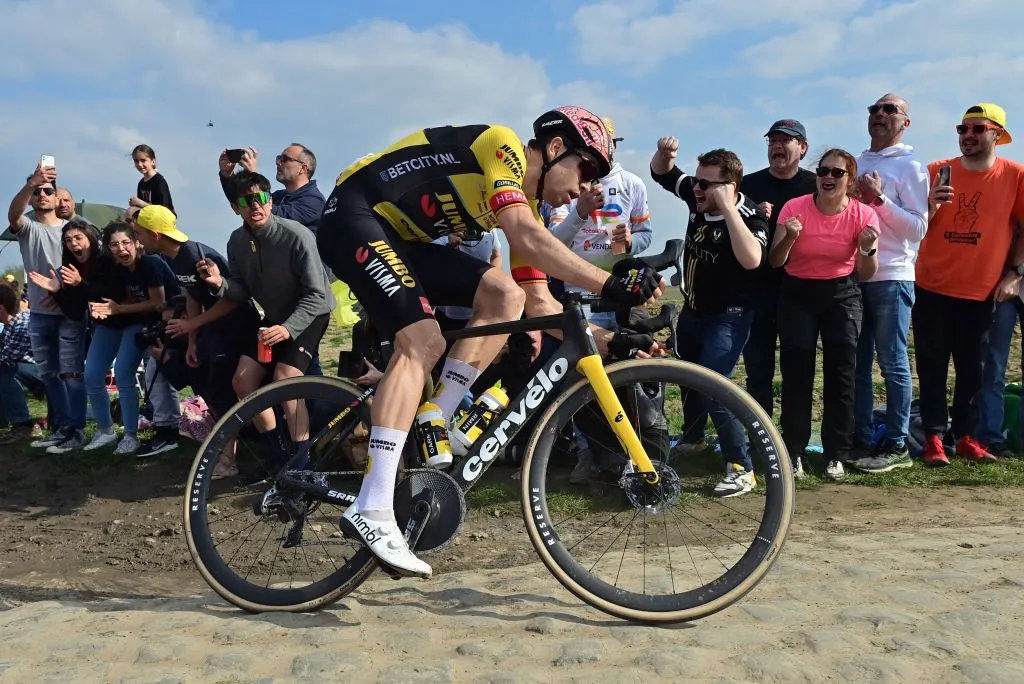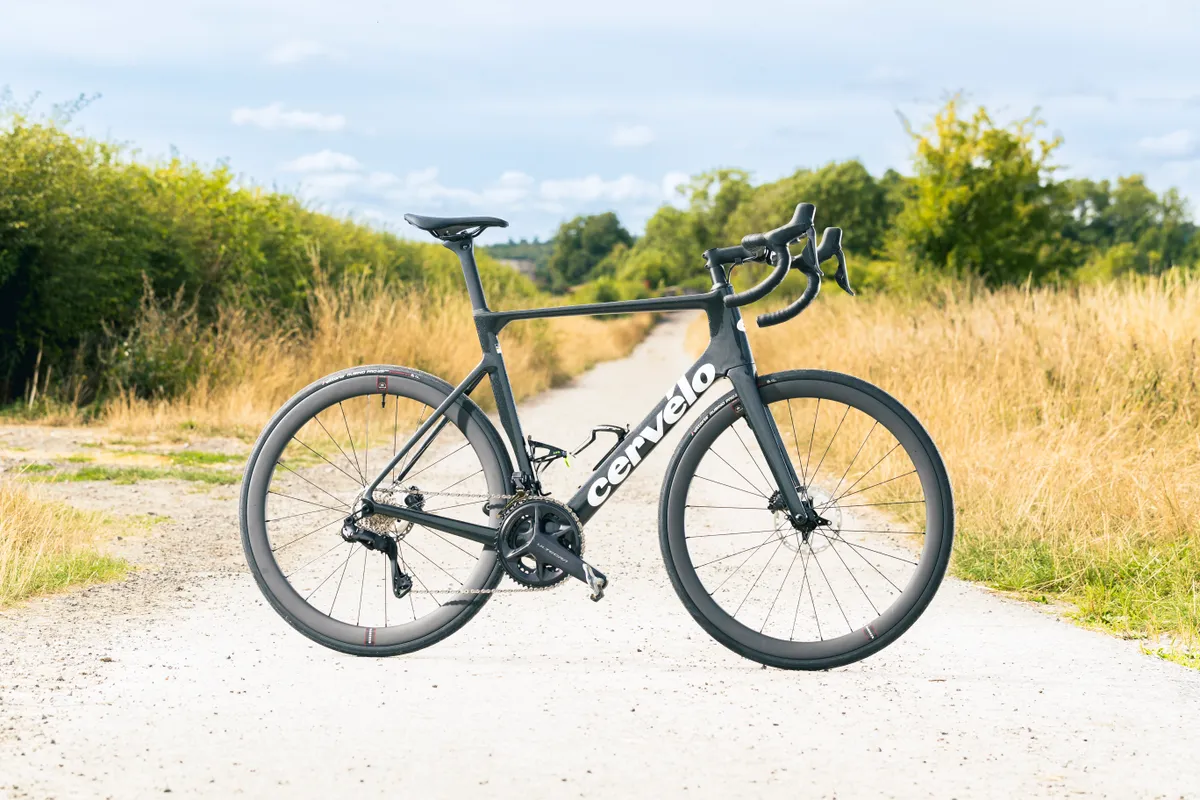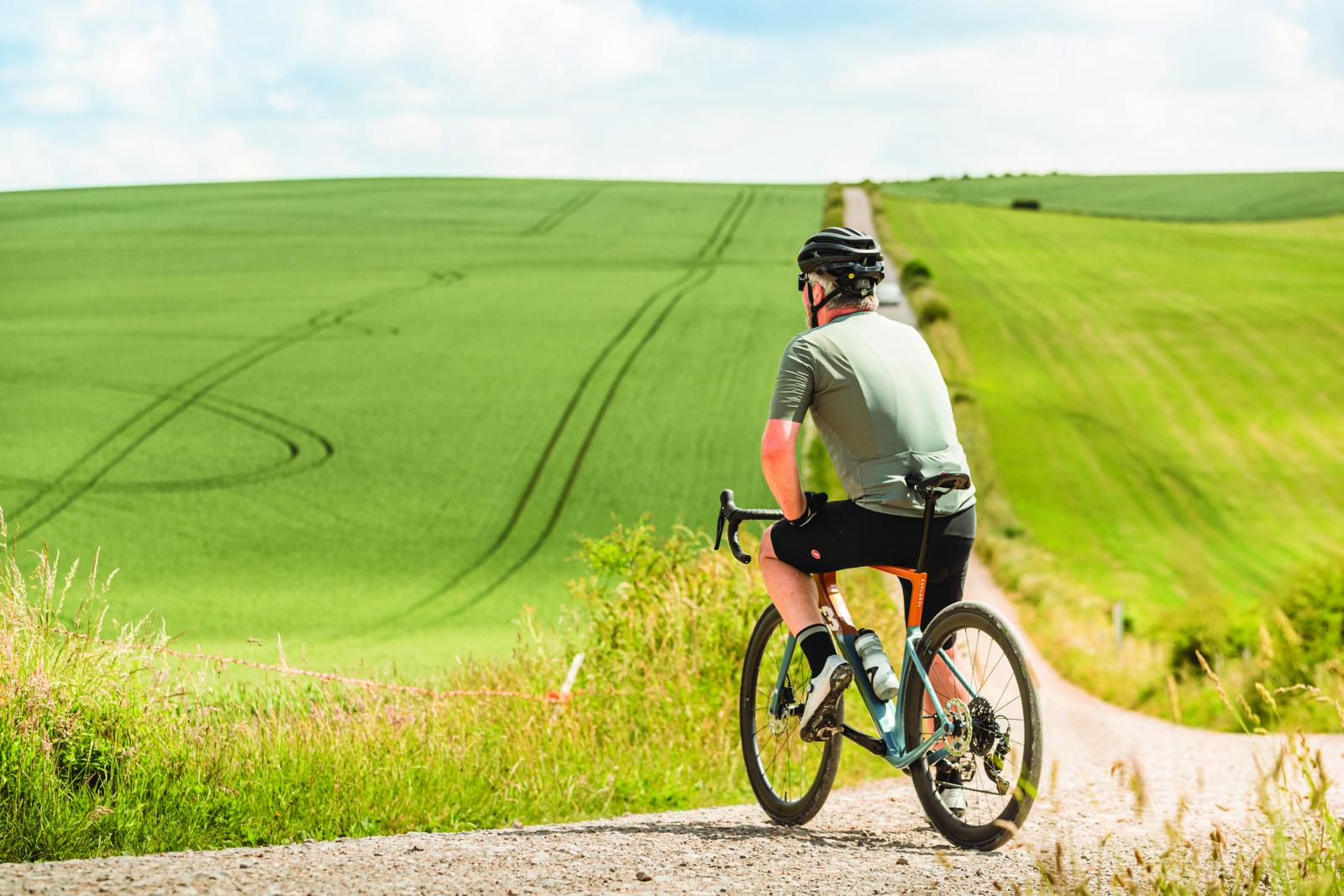The Soloist is the bike that made Cervélo.
The bike made headlines once again at Paris-Roubaix 2025, with Wout Van Aert finishing fourth after choosing the 2025 Soloist over his usual S5 for the cobbled classic.
Some may consider the Soloist a forgotten bike in the wake of the S5's cutting-edge aero and the R5's featherweight all-round race prowess. However, the Soloist is the bike that built Cervélo, and I’d argue it's the brand’s most important bike on sale today.
Cervélo was founded in 1995 by Gerard Vroomen and Phil White, who met in 1986, in a chance encounter between two post-grad engineers at McGill University of Technology in Canada.

The two like-minded riders were inspired by Chris Boardman and the Lotus bike, and Greg LeMond and his now legendary but then radical TT bar setup.
Vroomen and White were interested in applying aero knowledge to bike design. They were also frustrated at the lack of advancement, with proven designs such as these not translating into mainstream use.
Since no one else was doing it, the pair decided they would.
Baracchi barred

Their first ‘professional’ project, in 1995, was making the fastest possible bike for Italian pro Gianni Bugno; he wanted the fastest bike possible. The ‘Baracchi’ bike was radical for the time, and Bugno loved it.
Unfortunately, his team sponsors didn’t see a future for carbon, because the best bikes were made from Italian steel and with Campagnolo gears.
From there, Vroomen and White went to the less regulated and more receptive world of triathlon, cutting their aero chops before returning to the road.
Dawn of the Soloist
Then, in 2002, came the Soloist, a truly game-changing design. It was the first bike to use true NACA (National Advisory Committee for Aeronautics) derived profiles. Back in 2006, I spoke with co-founder White, and he explained that up until then, any aerodynamics on road bikes were merely an interpretation of what was thought to be aerodynamic.
Instead of taking off-the-peg round aluminium or steel tubing and simply flattening it into an approximation of an aerofoil, the Soloist’s tubing was custom extruded based on true aerofoil shapes.
Aluminium wasn’t Cervélo’s preferred material – it was, from the brand's earliest days, carbon fibre. However, the industry, and especially racing, wasn’t quite ready for it.
They are faster, so you’ll ride them

Still, the Soloist made its mark on racing when, in 2003, Cervélo became the bike supplier to Team CSC. White and Broonen knew the importance of team sponsorship in building brand recognition. Although Cervélo was a relative unknown in road racing and not a major brand, it took the duo's belief in the advantages of aero to convince CSC head Bjarne Riis of the same.
White explained: “Cervélo’s involvement from the start with CSC, and particularly Bjarne Riis, was that we believed we had the fastest and best riding bikes on the market, and we wanted to prove it. Riis believed in what we were doing, so we got the deal.”
When Cervélo’s partnership with CSC started, the team was 14th in the professional ranks; by the end of the sponsorship in 2008, CSC was ranked number 1. Phil continued: “CSC was great for us, Riis just got it, he knew that if we gave his riders the best bikes they’d get better results.
“In those early days, some of the riders expressed opinions on how they didn’t like the bikes, mostly before even riding them. Riis’ reaction was ‘They are faster, so you’ll ride them’.
“The results followed, thankfully! Our bike development has been informed by team feedback, for us it’s an R&D exercise, in engineering terms and development we’ve got a group of athletes at the very top of their game giving us important feedback about what we’re doing, that to us is much more valuable than selling bikes from the exposure of the brand.”

That original alloy Soloist took wins in the Critérium international and Paris-Nice. By 2005, Cervélo had reinterpreted the revolutionary Soloist shape in carbon with the SLC-SL.
The carbon bike was raced to numerous stage victories in the 2006-2007 pro tour season.
Golden years

However, 2008 was perhaps the Soloist's biggest year, with Frank Schleck winning aboard a Soloist SLC-SL on Alpe d’Huez. If proof was needed to validate Cervélo’s aero obsessions, winning on the mountain in the Tour was it.
In the same race, fellow CSC rider Carlos Sastre took the overall Tour de France victory using mostly the R3-SL, but the Soloist SLC-SL also featured. Aluminium lived on in aero, though, in the shape of the short-lived S1.
The following year, Cervélo branched out on its own with the pro tour Cervélo Test Team, which became Garmin-Cervélo. It also saw the end of the Soloist as it morphed into the incredibly successful S-Series of bikes (S is for Soloist in case you hadn’t guessed). The S3 and S5 have gone on to notch up a raft of victories throughout the last 15 years.

The Soloist returns

The Soloist returned in 2022, reimagined as a racing option for amateurs and club riders – a bike with Cervélo’s performance aims but at a more affordable price than its pro-tour developed R and S bikes.
That makes the Soloist Cervélo’s most important bike, a lightweight, aerodynamic race-ready bike that’s not priced so high as to be unobtainable for most.
It’s not cheap, but at £6,500 for a bike with a wireless electronic groupset and carbon wheels, it's significantly less expensive than the entry into the S5 world (£9,500) or the R5 (£8,300).
That said, the Soloist is lighter than the S5 and more aerodynamic than the R5, and it's perhaps for these reasons that Wout van Aert chose the Soloist as his preferred option for Paris-Roubaix.
The new bike's geometry matches the R5, so the ride position is one van Aert would have been familiar with, and the 34mm tyre clearance leaves plenty of room for big rubber.
You can see the influence of the original Soloist in all of Cervélo’s bikes – including the S5, R5, Áspero and Caledonia.

It’s not only Cervélo bikes that the Soloist has inspired. The Soloist name is now 23 years old, and the original revolutionary design has shaped not only all modern aero road bikes but all road race bikes since.
The adoption of true aerodynamics blended with light weight is the goal of any modern race bike.
Without that aluminium wonder from the plucky Canadian upstarts, we wouldn’t have bikes such as Specialized’s Tarmac, Trek’s Madone, Cannondale’s SuperSix Evo, Colnago’s V5RS and Y1RS, Cervélo’s own S and R5, and even the Paris-Roubaix winning Canyon Aeroad of Mathieu van der Poel.
I, for one, am so glad to see the Soloist back where it belongs, at the front end of the world’s toughest road races.
